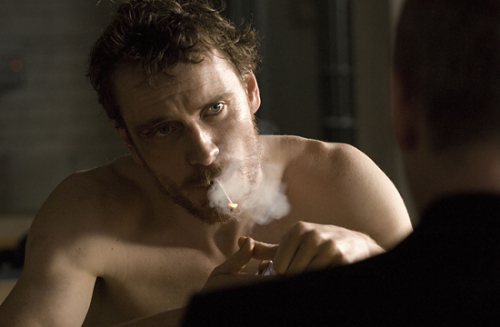Hunger is a riveting look at the 1981 IRA hunger strike and marks an astonishing directorial debut for Steve McQueen.
The Troubles in Northern Ireland represents one of the darkest chapters in recent British history. On screen it has been treated with varying degrees of success, ranging from misguided Hollywood nonsense such as A Prayer for the Dying (1987) and The Devil’s Own (1997), to much more substantial work like Elephant (1989) and Bloody Sunday (2002).
This film is a stark and disturbing look at one of the key episodes of the period when a group of IRA prisoners in the Maze led by Bobby Sands went on a protracted hunger strike. Their aim was to apply pressure against the British government, so that they could be classed as political prisoners.
It opens with some startling facts about the human cost of the Troubles before plunging us into bitter brutality of life inside the prison.
This is a world in which prisoners refuse to wear clothes, smear excrement all over their walls, have cavity searches, are forced to bathe and savagely beaten but also where prison guards live in daily fear of reprisals and where animalistic anger explodes at regular intervals.
Wisely, McQueen has avoided making a some kind of polemic for either side of the conflict and instead has created what is essentially a suffocating war movie that just happens to be inside the walls of a prison.
What makes it so absorbing is the meticulous attention to detail and the indelible images McQueen and cinematographer Sean Bobbitt have created here: a snowflake slowly lands on a bloodied fist of a guard; a fly slowly crawls around the hands of a prisoner; urine gradually seeps out from beneath the cell doors before being gradually swept back in.
All this might sound a little odd, but part of the success of Hunger is the way in which it uses abstract methods in order to present a well-known conflict in a radically different way – instead of bombs and unlikely shootouts, we have a startling examination of hatred and anger fuelling an intractable conflict.
In the role of Sands Michael Fassbender is utterly convincing and his physical transformation into an emaciated hunger striker is remarkable.
One mesmerising sequence with his priest (Liam Cunningham) is shot in a 17 minute unbroken take. It shows Fassbender’s tremendous ability to maintain character whilst also conveying the ideas and thoughts behind the prisoner’s actions.
The supporting cast, costume and period detail is all first rate but there are some clever touches that add to the oppressive sense of reality – most notably the real life audio of then Prime Minister Margaret Thatcher on the soundtrack. We never see her, but her intransigent presence is felt throughout.
Although some might feel the balance of the film is too focused towards Sands and the IRA perspective, I think McQueen has gone for a more visual style of storytelling with a script (co-written by Enda Walsh) that wisely eschews the need for clunky expository dialogue or token ‘positions’.
This is not a film that ‘takes sides’, rather it explores the full human horror of The Troubles through the lens of the hunger strike – the physical brutality and sheer squalor point to the entrenched hatreds that ensnared all of those caught up in it.
Perhaps the most shocking scene is one that actually takes place outside the prison – it has the impact of a sledgehammer and the audience is forced to examine a truly disturbing image on the screen. In many ways it encapsulates the audacious approach of the film.
Steve McQueen has been best known until now as an acclaimed visual artist, but this could well mark the beginning of a hugely promising career in feature films.
Hunger opens in the UK on October 31st
> Hunger at the IMDb
> Green Cine Daily with the reactions to Hunger at Cannes earlier this year
> Find out more about the 1981 Hunger Strike at Wikipedia
